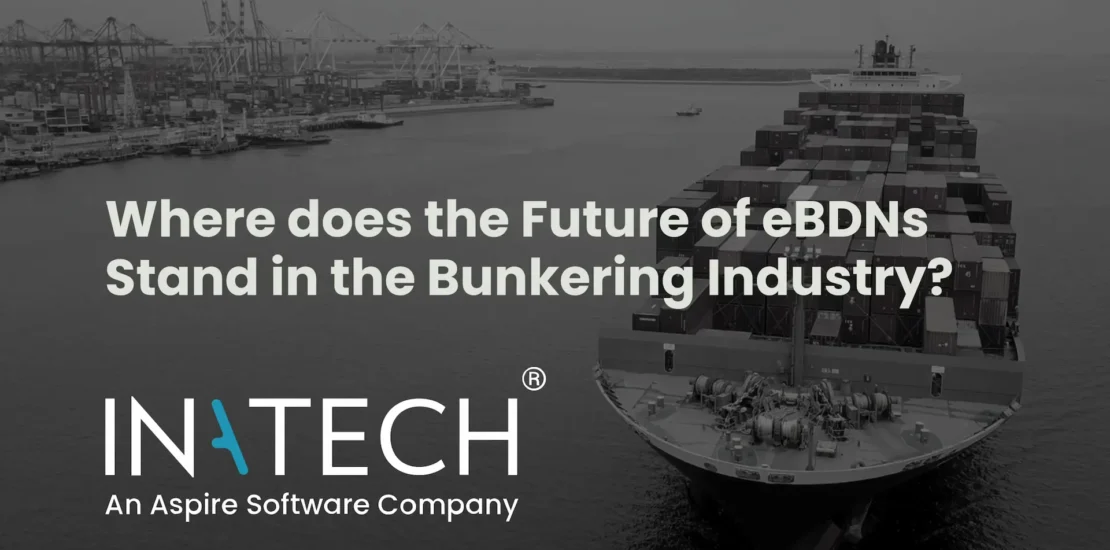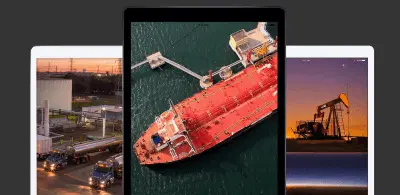Navigating the Digital Seas: The Evolution of eBDNs in the Bunkering Industry
- February 12, 2024
- Posted by: Inatech ETRM
- Categories:

Navigating the Digital Seas: The Evolution of eBDNs in the Bunkering Industry
The maritime industry, deeply rooted in tradition, is facing the challenges of the 21st century with the emergence of electronic Bunker Delivery Notes (eBDNs). In this article, we delve into the benefits, obstacles, and the potential frontrunners in adopting this digital transformation..
Benefits of eBDNs:
1. Compliance:
-
- Essential for meeting evolving emission regulations like EEXI and CII.
- Improved verifiability through digital signatures, timestamps, and blockchain.
- Minimizes errors, discrepancies, and regulatory investigations.
2. Resource Efficiency:
-
- Saves up to 40,000 working days annually, reducing manual paperwork.
- Accelerates administrative processes, enhancing operational workflows.
3. Safety:
-
- Eliminates the need for physical document transfer in hazardous port environments.
- Aligns with industry trends, using IoT and robotics to reduce risks for workers.
4. Sustainability:
-
- Contributes to sustainability efforts by reducing paper usage.
- Enables accurate fuel usage tracking for optimizing consumption.
5. Real-Time Reporting and Analytics:
-
- Facilitates instant reporting, addressing issues promptly.
- Allows data analysis for process improvement and fuel optimization.
Obstacles to eBDN Adoption:
1. Industry Resistance to Change:
-
- Traditional practices and low profit margins hinder swift adoption.
- Gradual digitization proves successful for companies willing to take the risk.
2. Infrastructure Issues:
-
- Reliability of internet connectivity, especially in remote areas.
- Harsh weather conditions impacting real-time updates and access.
3. Regulatory and Compliance Hurdles:
-
- Complexities in navigating digital documentation regulations.
- Varying standards across jurisdictions and compliance with international laws.
4. Technological Integration Challenges:
-
- Complexity in integrating eBDNs with existing systems.
- Lack of standardization in digital formats leads to compatibility issues.
Potential Leading Countries in eBDN Adoption:
- Norway:
– Known for its progressive stance in maritime technology. - The EU:
– Several EU countries, including Netherlands, Denmark, and Greece, exploring digital solutions. - United States:
– Certain U.S. ports considering digital solutions for operational efficiency. - United Arab Emirates:
– Advanced maritime services in ports like Dubai and Fujairah may drive digital transformation. - China:
– Vast shipping industry and changing regulations position China as a potential adopter.
Conclusion:
The journey towards adopting eBDNs, exemplified by Singapore, represents a promising step in digitizing the bunkering industry. Despite challenges, the benefits – compliance advantages, resource efficiency, improved safety, and potential for real-time reporting and analytics – make eBDNs an invaluable asset. As the industry adapts, Inatech provides market-leading bunker fuel procurement and management software, automating and streamlining operations for all operators. For more information or to book a demo, contact Inatech today.




